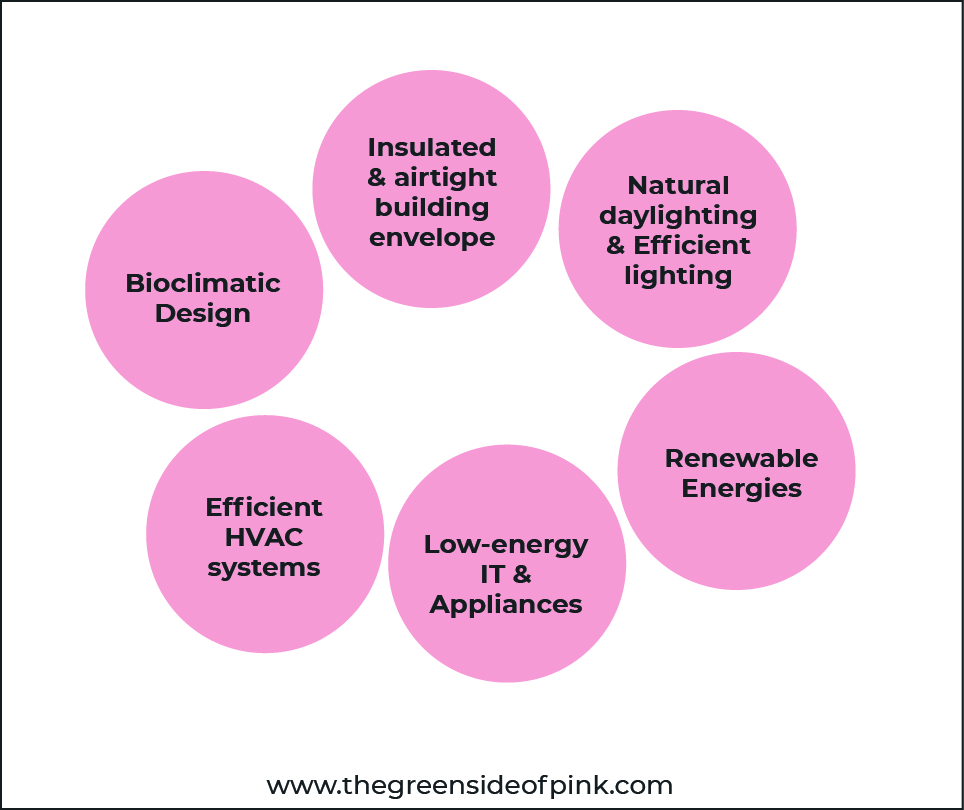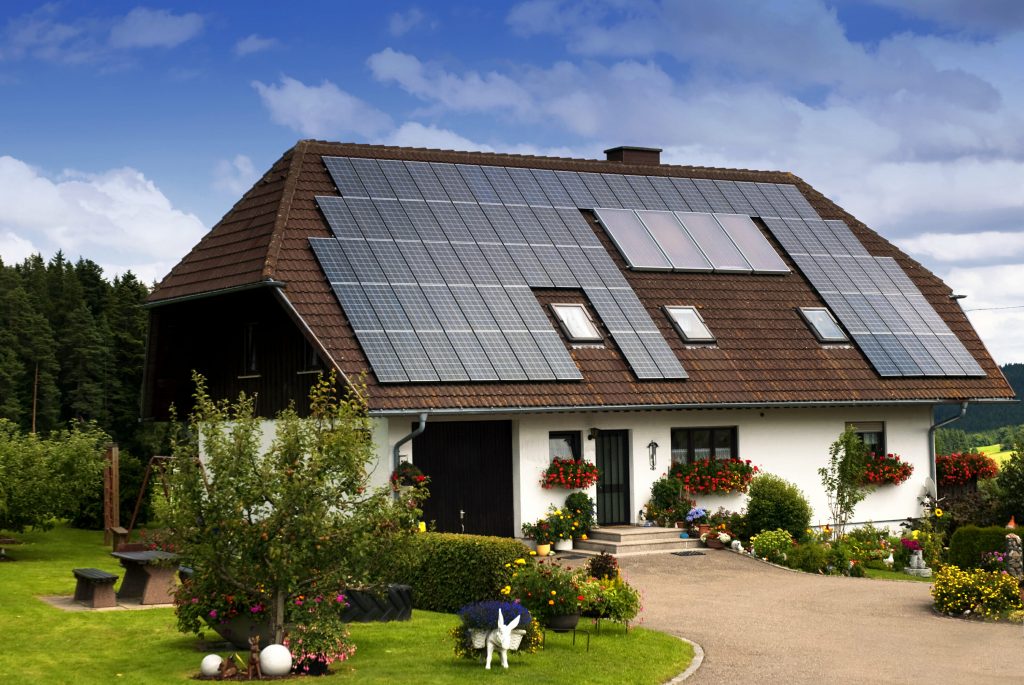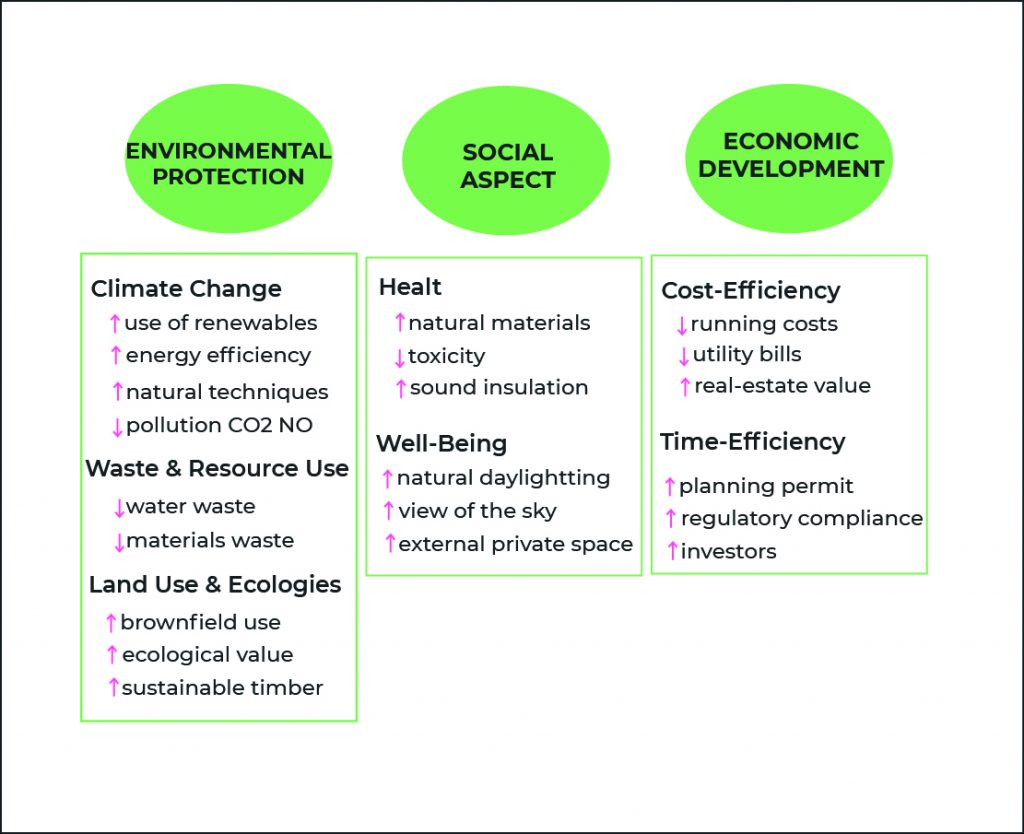The net-zero effect in architecture is achieved when a building produces as much or more electricity than it consumes over a period of time. It is achieved by a combination of energy-efficient architecture and renewable energy generation. Net-zero energy buildings are the key to a sustainable future.
Why Net Zero buildings?
Net-zero buildings are an important concept because architecture is a major energy consumer. According to the United Nations Environment Program report, construction and buildings contributed to 39% of the world’s carbon dioxide emissions in 2018. The harmful emissions and global warming pose serious threats to the ecosystems and humans’ well-being on this planet.
In the last decade, energy rates have been rising and fuels are running out. The UK has only two years of gas reserve left and is currently buying from other countries like Qatar and the United States. This situation identifies the need of utilising renewable resources for energy production. The increased rate of energy consumption and emissions is causing global warming. There is a significant increase in the rate of ice melting and glaciers; 9 out of 10 warmest years since 1880 have been in the last decade.

The Paris agreement’s goal of limiting global warming to 1.5 degrees Celsius can still be achieved. A lot of strategies discussed in the Paris conference in 2015 for carbon removal have failed on a large scale. It is becoming increasingly clear that the focus shouldn’t be on removing carbon that we keep releasing into the atmosphere. The only way of reducing global warming is urgently curbing carbon emissions. Energy-efficient infrastructure with a net-zero effect is the key to achieving this long-term temperature goal. The burning of fossil fuels can be eliminated if we can fulfill all our energy requirements through the use of renewable resources.
Energy Efficiency
Regardless of the definition of buildings with a net-zero effect, it is a fundamental step to first reduce the energy requirements of a building. This can be achieved through energy-efficient architectural design. Energy efficiency is the most cost-effective strategy, with the highest return on investment made towards it. Maximizing energy efficiency also reduces the cost required to develop and install renewable energy systems.

Renewable Energy
Once a building is energy-efficient, the remaining energy needs can be met using renewable energy technologies. Renewable energy can be accessed on-site and off-site. Some common and cost-effective on-site electricity generation techniques include photovoltaics (solar panels) and solar water heating. On-site renewable energy can also be generated using biomass. Wood, wood pellets, agricultural waste, etc. can be burned to provide space and utility water heating. Other on-site electricity generators include hydropower, wind, and geothermal, which are more challenging and expensive to use on a household scale.

Off-site renewable energy can also be accessed if there is limited space. For example, a facility owner can install dedicated wind turbines, solar collectors, etc. at a separate location.
Grid Connection
Net-zero energy buildings are still connected to the electric grid. This allows for the usage of traditionally produced electricity, in case the renewable energy generation doesn’t fulfill the building’s energy requirement. On the other hand, when there is excess on-site production of electricity, it can be exported back to the utility grid. This excess energy production offsets later periods of excess demand, resulting in zero net energy consumption.
Applicability of net zero building principles
Net-zero energy building principles can be applied to most projects, including residential, industrial, and commercial buildings. These principles can be applied to both new constructions as well as existing buildings. Achieving zero energy is becoming an increasingly achievable goal. It is gaining popularity across the world. Private commercial property owners have a growing interest in developing zero energy buildings to meet their corporate goals. In the United States, many state and local governments are beginning to move toward zero energy building targets in response to regulatory mandates.

In 2019, the European Commission introduced an ambitious proposal to make the bloc climate-neutral by 2050. Achieving net-zero emissions requires sustained efforts across sectors, but some could achieve the target more quickly than others. According to Mckinsey, most technology required to decarbonize the building sector is already available. However, renovating large portions of the already existing buildings is a massive undertaking. The building sector can reach net zero in the late 2040s.
As stated earlier, buildings contribute to about 40% of carbon emissions. If all current buildings were renovated to be net-zero energy, and all new construction was built to be of net-zero standard, architecture’s carbon footprint would be reduced by that 40%. Net-zero energy is a powerful concept because it is a key solution towards achieving carbon neutrality and eliminating fossil fuel use. If we ask questions like “What if everyone did it?” to net-zero energy, the result would be massively positive.





